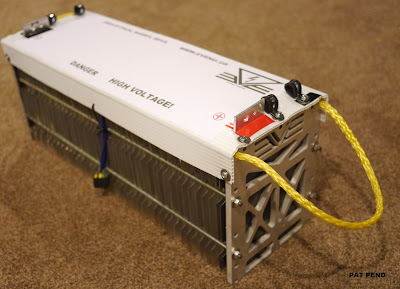Still not home yet but a couple hour layover is as good as time as any to update the blog. I have had a few people ask me about the cooling fins on the pack so
I am posting so more info.
I know there
is much debate whether thermal management is required for these batteries. Some say it is not required while others say
it is essential for battery life. In
reality they are both correct. If you
are taking a leisurely cruise on a spring day then thermal management will not
be a problem for you. The starting
temperature of the pack and the low discharge rates don’t require it. However if you are driving in more extreme
conditions or operating your batteries at a high discharge level then thermal
management becomes much more important.
For instance if you are doing laps +20 on a track on a hot summer day
then your batteries will NEED cooling, not to mention every other system on your car:

The coolings fins placed between the cells are essential for getting
the heat out of the cells. The fins are
made from 8” wide aluminum flashing from Lowes.
It comes in 25’ long rolls that are cut into squares. Since I don’t like making the same part more
than once, I set-up a quick line to crank out a hindered in a matter of minutes
using a $30 paper cutter from the office supply store.
The cutter comes with a simple fence and has no problems
cutting the soft thin aluminum.

As you can see in the picture I setup the cutter and roll on
a bench so I simply unroll it cut and repeat.
For this pack I used one fin every other cell. This assures that each cell is in direct
contact with a fin and should be minimum if your application requires
cooling. Fewer fins will only cool some
cells and result in potentially significant variations in cell
temperatures. For very high power and
ambient temperatures you can step up to a fin in between every cell for double the cooling. I used bare aluminum flashing for maximum
heat transfer and it was the only finish I could find in 8” width. The flashing is also available in prepainted
which could provides a thin barrier which could help with voltage leakage from
the pouch casing but will decrease the effectiveness of the fin some
amount. Whichever flashing you use make
sure that the surface of the flashing and the cells are clean before
assembly. Any dirt or debris that
becomes trapped can potentially damage the cell during assembly and/or result
in wear over time.













